The Pittsburgh Penguins announced yesterday that they extended rugged defenseman Deryk Engelland's contract for 3 years at $1.7 million dollars.
The deal is a guaranteed, one-way contract with an annual cap hit of around .56 of a million dollars.
While Engelland has fast developed a reputation as one of the toughest fighters in the NHL -- ask Colton Orr and Jody Shelley about that if you have any doubts -- he's also proven himself to be a pretty solid 6/7 defenseman in the league.
Engelland has gotten better defensively in the season's first half, and adds a needed physical element in the corners and in front of the Pens' goal. If he continues to do that while providing the intimidation factor, his contract can only be considered a bargain for Pittsburgh.
"His ability to play defense and to defend and to be physical against good players is the biggest thing he's shown this year," head coach Dan Bylsma said.
Obviously, many in the organization are happy that Engelland has developed into someone the team can trot out there on a regular basis and feel fairly comfortable about it, but let's face it --- while Engelland has been around the organization for several years, I don't think many people saw him taking the jump he did this year.
If the Penguins' brass and GM Ray Shero had anticipated Engelland playing so well, they probably wouldn't have signed Ben Lovejoy to a similar contract before the season.
Lovejoy, of course, was who the Pens thought would capture and hold down the spot as their #6 blueliner this year.
The Penguins are going to have an interesting conundrum on their blueline the next several years. Just about every regular in their lineup at that position is under contract for at least the next several seasons, and Pittsburgh is very, very deep in their organization with prospects on defense.
In fact, their top prospect on the back end -- Simon Despres -- is almost NHL ready as it is, and the Penguins have several other strong rearguards in the pipeline that are probably going to be ready to take things to the next level at some point.
What does all of that mean?
Trades.
I'm not suggesting Shero will make such a move before this year's February 28 trading deadline, but with all of the depth the franchise has at that position, it only makes sense that he'll move a blueliner or two eventually -- and probably for help up front. The only questions are when it will happen, and who's going to go.
Moreover, I wouldn't be the least bit surprised to see it be someone from the big club. If it happens that way, I'm afraid that Alex Goligoski is the most likely one to move, both beacuse of his skill set and role on the team, as well as the fact that he has a reasonable cap hit on a soon-to-be expiring contract.
In short, the Penguins could probably get decent value for the offensive blueliner.
Obviously, time will tell.
Meanwhile, it appears that some of the Winter Classic television rating information I talked about yesterday may have been incomplete.
Yesterday, I wrote that the game appeared to score a 1.8 rating. Later, it seemed to be reported at a 2.3. Then, news broke that Saturday's Winter Classic was the most watched game in the National Hockey League in 36 years, with an average of 4.5 million people tuning in to watch the game in primetime.
That's a 22% increase over last year's 3.7 milion who tuned in to watch the Boston Bruins and Philadelphia Flyers play in the 2010 Winter Classic, and .1 million more than those who watched the 2009 Classic between the Detroit Red Wings and Chicago Blackhawks.
Now, I'm not in television, so I don't understand how you can have a 1.8 rating (or even a 2.3 rating) be less than last year's 2.6 rating, yet have 4.5 million people tuned in compared to 3.7 million, but like most other numbers in this world, I'm sure they can be skewed any way desired to make a point.
Hey, I'm all for the league tooting its own horn in any way that will help them secure a good national TV deal at the end of this season, so if number-skewing is what it takes to spin the public perception, you won't find any objection here.
Where you will find an objection, however, is in the Penguins' locker room.
To David Steckel's hit on Sidney Crosby late in the 2nd period of the Winter Classic, that is.
There's been increasing hub-bub about this hit in the days since the game. I didn't talk about it in either of my two post-Winter Classic pieces because I didn't see anything to it.
And, frankly, I still don't.
The Penguins, obviously, don't feel the same way about the hit.
"It was definitely dirty," said Pens' defenseman Brooks Orpik.
"It was not a clean play," said forward Mike Rupp. "If anybody would have seen it, I promise there would have been a reaction."
For those who haven't seen the play, it can be found here.
Now, I've watched this footage over and over and I don't see any ill intent on Steckel's part whatsoever. I don't see him turning his stride towards Crosby at the last second, as some Penguins have alleged, nor do I see him doing anything which looks like he's trying to take a cheap shot at Pittsburgh's Captain.
To me, it appears that Steckel is looking ahead watching the play going up the ice and trying to get in on the rush --- then Crosby makes a sudden turn into his path. The fact that Steckel is about a half a foot taller than Crosby is what would put his shoulder at Sid's head-level.
Perhaps even more would be made of this is Crosby suffered a serious injury on the play. As it was, he was only temporarily dazed, and no long term harm was done.
As far as I'm concerned, it's much-ado about nothing, even if Orpik doesn't think so.
"We still play him a couple of times," he said.
More tomorrow on the Pens/Lightning.
Subscribe to:
Post Comments (Atom)






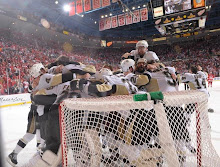
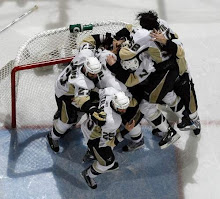



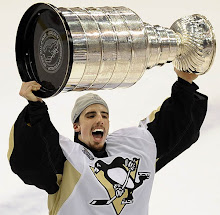


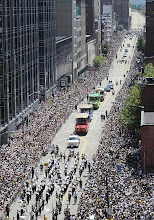



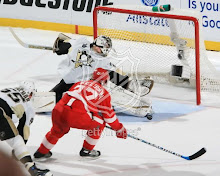
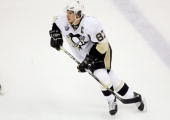
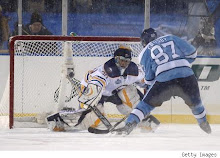
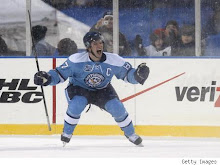
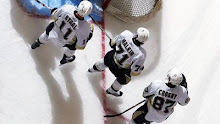

No comments:
Post a Comment